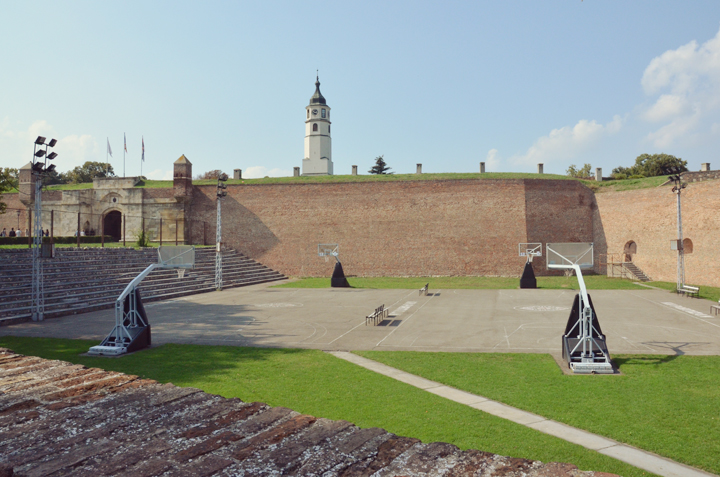A postcard for Frankie
I’ve been a long-time fan of Frankie, a smart Aussie publication with a penchant for all things indie and visual. Their thoughtful travel series Postcards, first caught my eye when my friend Emma, shared her incredible photographs from Cuba.
During my recent trip to Serbia I had the chance to write for Frankie about my hometown, Belgrade, a place that isn’t often the subject of wanderlusty travel features. Read an excerpt below, or the full interview here.
Kalemegdan Fortress
Please tell us a little bit about the neighbourhood that you live in.
I grew up in an old residential part of Belgrade known as the ‘Professors’ Colony’. The buildings are large, grey Soviet-style concrete blocks built after WWI to house teachers and their families. They are surrounded by shaded courtyards alive with children, graffiti, colourful laundry lines and the odd stray dog. Now visiting many years later, I love staying in the same area because each corner is loaded with memories of my childhood, the place I learned to ride my bike, went to school, got into trouble…
What kind of stereotype has Belgrade earned, and how is it different to what people expect?
The hard truth is that most people associate Serbia with a series of conflicts that took place two decades ago. And some of those scars are painfully obvious on the chipping facades and a few burned out buildings (The Yugoslav wars shook the region throughout the 90s and Belgrade suffered a NATO bombing campaign in 1999). But the city’s charms run deep below its surface. If you have a chance to spend a day (and night!) in Belgrade, many of the negative misconception will be shattered. You will find thriving art and culinary scenes, a frenzied party culture and a "live for today" spirit that is a direct product of a tumultuous past.
Sava Mala neighbourhood
How is Belgrade city changing?
Belgrade continues to be at the crossroad of East and West both geographically and politically. It’s on the doorstep of the EU without being a member. So it’s a constant balancing act challenged by a stuttering economy. The most recent obstacle, is how to humanely process thousand of Syrian refugees that are passing through the country on their way to western Europe.
If you had a day to take an Australian around your town on a Sunday afternoon, what would you do?
We would start outside of the city and work our way back in. First, a bit of culture at Muzej Macura in Novi Banovci, where a beautiful collection of Serbian conceptual art is hidden away in a village surrounded by corn fields and fruit trees. The work is housed in two equally interesting buildings—a modern home and a reclaimed barn—both on the banks of the bustling Danube river. We’d grab heirloom apples from the orchard and some lavender water then head back to town for lunch. Manufaktura is a great spot to sample traditional Serbian cuisine in tapas-sized portions (like cevapi, kajmak and pecenica) then ice cream at Crna Ovca (lemon basil is my favourite). After that, we’d take in some history by walking around Kalemegdan, a large Roman fortress and leafy park overlooking the city and river. At sunset, we’d grab a pint of local craft brew (like Kabinet) at Kurosava Cafe, a boat-house on the river Sava, where mini, moored boats double as cafe tables.
Lavender water at Muzej Macura
What do you miss most about Belgrade since moving away?
Beyond dear friends and family, I miss the community spirit. Even though the city has a population of over 2 million, you will run into people you know frequently. More often than not, they will have time to stop and chat or grab a drink together at one of the ubiquitous cafes.
Where is the best place to get a drink?
For a lively atmosphere, definitely one of the splavs (docked boats) on the Sava river, take your pick. Alternatively, there is a lovely spot at the top of a flight of stairs (to Branko’s bridge) which overlooks the river, called Jazz Garden. It’s a magical, little hideout with a Parisian vibe in an apartment building from the 1800s.
Sunset on the Sava river







